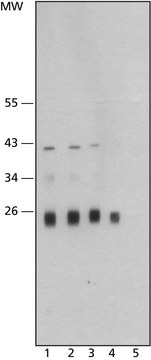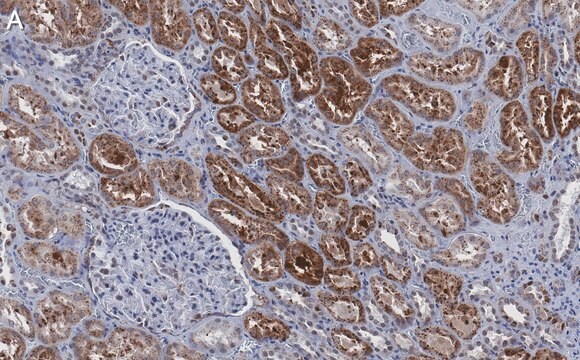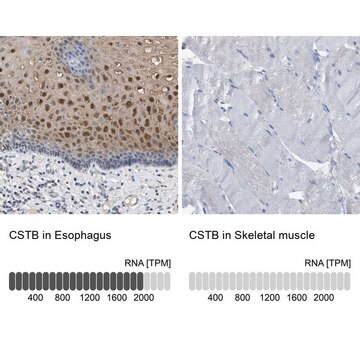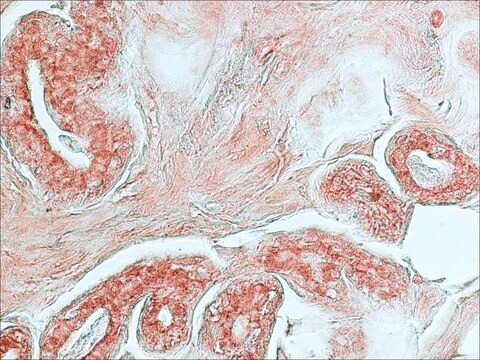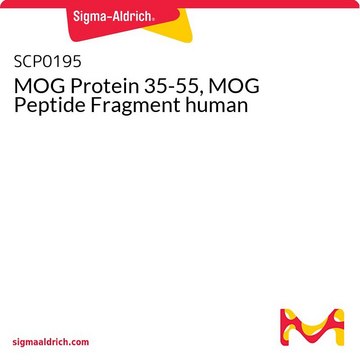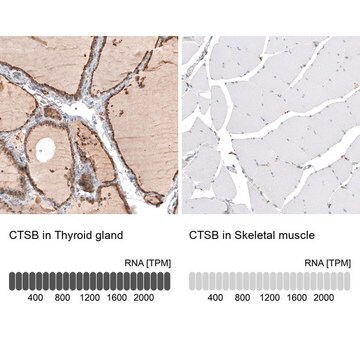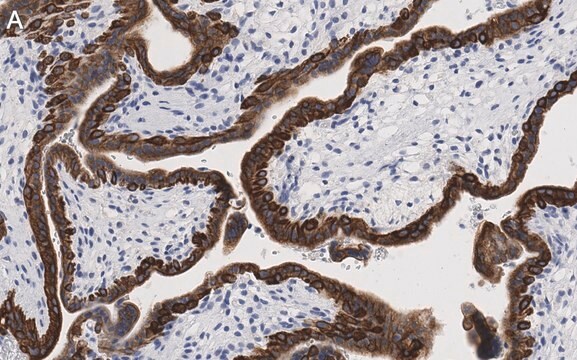C6243
Monoclonal Anti- Cathepsin B
clone CB59-4B11, purified from hybridoma cell culture
Sinonimo/i:
Anti-APPS, Anti-CPSB, Anti-RECEUP
About This Item
Prodotti consigliati
Origine biologica
mouse
Coniugato
unconjugated
Forma dell’anticorpo
purified immunoglobulin
Tipo di anticorpo
primary antibodies
Clone
CB59-4B11, monoclonal
Stato
buffered aqueous solution
PM
antigen ~25 kDa
Reattività contro le specie
rat, human
Concentrazione
~1.5 mg/mL
tecniche
immunohistochemistry: suitable
indirect ELISA: suitable
western blot: 4-8 μg/mL using HCT-116 cells.
Isotipo
IgG1
N° accesso UniProt
Condizioni di spedizione
dry ice
Temperatura di conservazione
−20°C
modifica post-traduzionali bersaglio
unmodified
Informazioni sul gene
human ... CTSB(1508)
rat ... CTSB(64529)
Descrizione generale
Immunogeno
Applicazioni
Azioni biochim/fisiol
Monoclonal Anti-Cathepsin B specifically recognizes human1 and rat1 cathepsin B (~ 25 kDa). The antibody epitope resides within the peptide sequence EPGYSP which corresponds to amino acids 212-217 of human cathepsin B. The antibody does not cross react with the closely related lysosomal cysteine proteases: cathepsins L, H, K, S, V, and W.
Cathepsins significantly takes part in the immune response, by processing antigens into peptides for its presentation through MHC class II molecules.
Stato fisico
Esclusione di responsabilità
Non trovi il prodotto giusto?
Prova il nostro Motore di ricerca dei prodotti.
Prodotti correlati
Raccomandato
Codice della classe di stoccaggio
10 - Combustible liquids
Classe di pericolosità dell'acqua (WGK)
WGK 1
Punto d’infiammabilità (°F)
Not applicable
Punto d’infiammabilità (°C)
Not applicable
Scegli una delle versioni più recenti:
Possiedi già questo prodotto?
I documenti relativi ai prodotti acquistati recentemente sono disponibili nell’Archivio dei documenti.
associated with suppression of angiogenesis
the Endo- and Exopeptidase Activities of Cathepsin B
Il team dei nostri ricercatori vanta grande esperienza in tutte le aree della ricerca quali Life Science, scienza dei materiali, sintesi chimica, cromatografia, discipline analitiche, ecc..
Contatta l'Assistenza Tecnica.